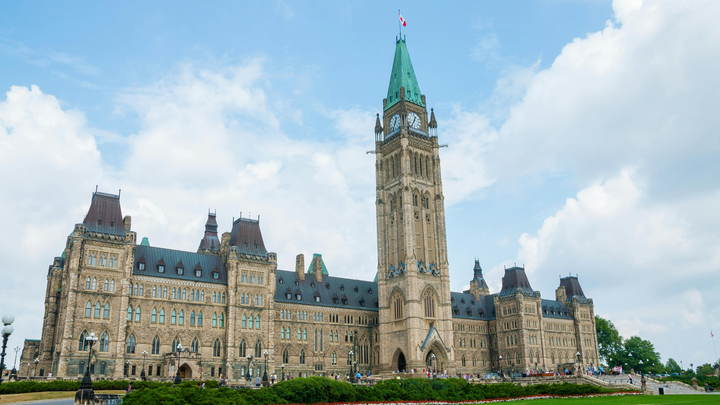The Globe and Mail's Confusing Analysis of the Rental Crisis
In an attempt to both-sides the issue, the column cites worrying trends and mumbles out something about a land of contrasts

Here are some facts about housing and shelter in Canada right now. Renting is growing at double the rate of home ownership. The 2021 census reported that Canadians were less likely to own their own home than 2011. November saw the average rent in Canada rise to $2,024, with the average price for a one-bedroom apartment sitting at $1,710. In Toronto, where the average rent for a one-bedroom is $2,474, affordable housing is largely a myth. RBC reported that baby boomers and seniors are the largest growing rental market. This is troubling taken alongside Statistics Canada reporting in April of this year that nearly 1 in 5 workers are nearing retirement. CEOs who want seniors back in the workforce are trying to tell us that retirement is “an outdated notion.”
Canada is in the midst of a housing crisis, involving home ownership as well as rentals. Most Canadians share a concern over their homes. This is the reality of modern capitalist society that needs to be confronted and combated.
This is why it’s completely absurd that The Globe and Mail felt it necessary to publish a piece with the headline “Renting is a personal finance dumpster fire, yet it’s also the hottest trend in housing.” What’s even more concerning is that the article itself cites many of these facts listed before and still comes to a muddled conclusion.
The column is written by The Globe and Mail’s personal financial columnist Rob Carrick. There’s no need to worry, Carrick is no Rex Murphy or Jon Kay. His column usually offers salient personal financial advice. “Young people should get a credit card at this age”, “here’s the best provinces for dividend investing,” “interest rates” or something. There’s usually nothing warranting a deeper analysis on his framework. Readers who want financial advice get it from a fairly reliable source. That’s why it’s curious Carrick’s piece on the rental market is so confusing.
The Faulty Foundation
To begin, the inflammatory headline does not receive adequate explanation in the body of the article. Calling renting the “hottest trend” would imply that it’s a favourable situation, despite being a “personal finance dumpster fire.” The article, however mostly cites statistics that paint a negative picture.
The introduction contains facts about Canada’s increasing rental market, citing the RBC Economics report mentioned earlier. After this point, Carrick attempts to explain the increase in renting by citing “inflated house prices, immigration, an aging population and the growing number of people who live alone.”
These are, largely, correct assessments. However, there’s context left on the cutting room floor. In terms of inflated house prices, this is because Canada has a dangerous reliance on the real estate industry’s contributions to GDP. In fact, the cooling housing market may have devastating consequences for the Canadian economy in the future. Real estate in this country has been commodified and made profitable, so it’s necessary to point out the economic forces driving up housing prices are fundamentally tied to the prices themselves.
The claim another factor in the rise in rentals stems from “the growing number of people who live alone” is misleading. The number of Canadians who live alone is growing, yes, but roommate households have increased at a higher rate, rising 14 per cent between 2016 to 2021. In comparison, single-person households rose 1 per cent between 2016 and 2021. The CBC article reporting the information from Statistics Canada further explains that single-person living situations has a correlation with Canada’s housing crisis, but not necessarily a connection.
While the number of Canadians living alone is now at a record high, Canada has a relatively small number of single-person households compared to other wealthy nations. All other countries in the G7, apart from the U.S., have more single-person households than Canada.
How exactly single-person households contribute to the housing crisis is left unsaid. Presumably, this rests on the assumption the crisis is primarily driven by a lack of supply and a high demand. Carrick diagnoses this directly later in the piece, writing the source of high prices are “high demand and inadequate supply.” More housing is typically the only solution proposed. This analysis stems from a deeply ideological neoliberal and market-oriented position. It’s also faulty logic.
One factor unmentioned in this explanation is the government’s connection to, and protection of, landlords. In June, Ontario increased what landlords can charge tenants the most in a decade. Meanwhile, 40 per cent of MPs have an investment in real estate, which would explain the lack of rent control proposed by our elected leaders. As for relief, the government has opened up applications for a one-time $500 payment to individuals making under $20,000 and families making under $35,000. In effect, this is a subsidy for landlords. It means tests renters, granting $500 to be handed over to their landlord with no further restrictions on what landlords are currently charging.
Landlords gain a passing mention at two other points in Carrick’s article. Immediately after the explanatory paragraph, he notes “Demand has given landlords the power to increase rents at rates far above even today’s high inflation rate.” This frames the issue as one of demand, rather than the consequence of commodifying the housing market, turning rental units into investment opportunities. Again, this references the neoliberal “supply” argument.
The second mention of landlords comes toward the end of the column, hanging a dismissive lampshade on the issue. “There’s also some landlord greedflation in the mix,” Carrick notes, using federal NDP leader Jagmeet Singh’s coined phrase that supposedly explains the capitalist profit motive. This is immediately followed by a separate mention of “some floundering investors who are jacking up rents to try to offset their rising mortgage costs.” Apparently, these people are different from landlords.
Carrick suggests the only role landlords play in the housing crisis are reactive, due to demand and “some landlord greedflation.” In this analysis, phenomena like renovictions become a mere abnormality.
Mixed Messaging
The exclusion of landlords as a major factor in the housing crisis may be the column’s cardinal sin, but this leaves the rest of the piece in an odd state of flux. Carrick notes “Renting is where we see the worst of the damage caused by the past decade’s sky-high house prices” and “The rental market soaking up all this demand is an affordability wasteland.” At the same time, he writes “Some people seem to appreciate the freedom of not having to pour time and money into a house” and “there’s a component of the rental market with the financial clout to pay the going rate,” referring to boomers selling homes to rent for the rest of their lives. This appears to be framed as… a positive? Or just a fact of life?

The entire piece is framed with horrifying statistics about Canada’s housing and rental market but claims unsubstantiated positives exist, such as “freedom” from home ownership. This begs the question: What is the point of this article?
The final paragraph offers the closest thing to an answer.
The rise of renting in Canada should be something to celebrate – a sign of people breaking away from the groupthink that drove house prices to a ridiculous peak earlier this year. Instead, renting has become just like owning: inviting to a financially privileged few but unaffordable for many.
Unfortunately, as Futurama’s Hermes Conrad would say: “That just raises further questions!” Why is renting something to celebrate? What on Earth does he mean by “groupthink?” How is renting “just like” owning?
This ending also suggests that housing prices are at their current level because everyone…wants… to own… a home. Renting is actually not like owning because you are paying someone else’s mortgage, while gaining none of the same financial benefits. What makes renting something to celebrate inherently by itself? That concept was not even remotely explored in the preceding paragraphs.
In most cases of corporate news media and their reporting,, a through-line that propagates a certain narrative can be found. To be clear, this piece does have elements of that. The article has a reluctance to name landlords as a factor while simultaneously indicating housing supply is the sole issue driving the housing crisis. But on the other hand, it correctly assesses the dire state the rental market is in and its relation to the housing market.
Carrick seems to be aware that rental conditions operate under unfavourable circumstances. “It’s tempting to say that renting is an overheated mess right now,” the piece notes. “But home ownership is an impossible alternative for many people unless they compromise on the city where they live or co-buy a property with friends or family.” These realities are acknowledged, while the explanation of the “hottest trend” remains unanswered.
A “hottest trend” would suggest a passion that informs why people pursue it. This article comes nowhere close to explaining that claim. So why does it exist? My educated guess would be: this piece can’t dismiss the housing crisis, but hopes to limit the sting of its reality. But that’s all it is… a guess. In all honesty, I’m truly stumped.
Did you enjoy this dissection of media coverage? Share The Catch with your friends!




Comments ()